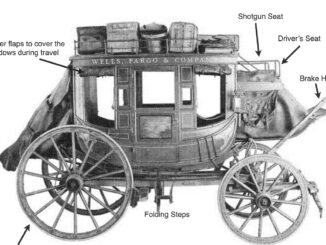Ah, Spring! The season that lifts the heart. With its rains and extended sunlight, life nestled in a bulb or seed begins to stir and branches forth with a center stalk, then support stems, and the result is a beautiful gift of existence. This author’s simple mind can’t help but compare that magical occurrence to other facets of our lives like the growth of our community. First there are the early settlers nestled on their claims. Among them stirs the desire to have a court located closer to their lands in place of the distant Logan court. Kentucky legislators agreed and March 1997 Warren County was created and local commissioners appointed. The basic stem of the town’s existence became real with the construction of a courthouse on the designated town square. Support elements to the town’s growth came from the created lots for sale surrounding the courtyard. Suddenly the beautiful gift of existence once again blossomed into the city of Bowling Green.
Accommodations would naturally have to be established to aide individuals visiting the courts, so hotels began to appear. The first building believed to be built was on the northwest corner of the main route (College Street) leading from the river to the courthouse. Built by Samuel McDowell in 1815, it was sold to Benjamin Vance in October of the same year. Known as Vance’s Tavern, it was the Bowling Green Hotel. The brick two-story building provided meal services downstairs, overnight lodging on the second floor, and care of horses in the stable. The permit for services and the rates to be charged were granted by the local commissioners.
The influx of visitors gave rise to other opportunities for visitors. A general store appeared on the southeast corner of the square. The store was not well lit and suffered from mud and dirt off the existing roadways, but carried a variety of needed supplies for early settlers. Locally-produced perishables were sold in the general store along with necessities as available. These included bolts of cloth, pins and needles, flour, sugar, pots and pans, to name a few essentials. Some hats, shoes, and articles of clothing along with farm supplies were carried in the initial general store. As the need for supplies increased with time, the general store concept faded out as local lots around the square were sold and specialized stores began to appear: shoe stores, clothing and women’s apparel, hardware stores, and farm supplies.
Apothecary needs were found across the street from the general store in a building built in the mid 1830s. Known as the Quidley Building, it is still standing on the corner of Main and State today. Opened January 1842 as a pharmacy by A. Star and J. L. Younglove, it sold pills, powders, and potions along with healing plants popular in the area. Its sale items included liquors and tobacco products, making the location a popular meeting place for the city’s gentry. In its relaxed setting, the day’s news was discussed, the latest stagecoach and mail deliveries met, and greetings exchanged around the pot-bellied stove.
Taverns (or hotels), general stores, and a local meeting place are forerunners for success in building a vibrant and progressive community. There is, however, one other entity just as important, if not more essential, for success. That person is the blacksmith. Craftsmen who could create objects out of iron (known historically as “black metal”) by hot and cold forging on an anvil have been revered through history for their ability. If the smith was a farrier as well, his skill in the forging of shoes for horses was essential to the success of the frontiersmen and early settlers. His establishment was a convenient meeting place as they waited for services to be rendered.
Through the years, poems, stories, books, and movies have featured blacksmiths. Having read Henry Wadsworth Longfellow’s 1839 “The Village Blacksmith,” who could forget the hardworking nature and steadfast presence of the local smith. Usually self-employed, he could fashion metal in endless ways to create and repair equipment: hoes, plows, shovels, wagon wheels, household utensils, rails, and gates and could even produce nails, a scarce item often in pioneer days.
In your mind’s eye, approach the work setting of a smith. The forge, anvil, and bellows will be outside the shop for safety. The smith will be wearing a leather body apron to protect himself from flying sparks. A helper, often a youngster, will often be by the bellows to keep the fire hot. When hot enough, the metal will be transferred to the anvil to be pounded into shape. At this stage, one could judge the skill of the worker by his shaping and pounding with the heavy hammer. If the worker uses tongs, wedges, chisels or other tools to create the object, his skill is even more evident. It takes years of practice to complete a perfect product.
Bowling Green in the 1800s was fortunate to be blessed with blacksmiths, most of them along the corridor of State Street and Court Street. Most were known as outstanding citizens, one even running for city office. The best known in the history records was Robert E. Wilkerson (1868-1943). His shop was located at 141 Main Street. His years of success as a businessman was due to his ability to adjust his work to the surrounding changes in roles from blacksmith to farrier, from manufacturing and repairing carriages to automobile welding. He remained active in the community as a volunteer fireman and served duty at Potter Opera House events.
Taverns, general stores, pharmacies, and blacksmiths played important roles in the blossoming of this community. So did a long list of industries and a host of individuals. Over one hundred REMEMBERING articles have recognized many of these and hope to continue to highlight their contribution to this beloved community.
-by Mary Alice Oliver
About the Author: Mary Alice Oliver is a Bowling Green native who is a 1950 graduate of Bowling Green High School. She retired from Warren County Schools after 40 years in education. Visiting familiar sites, researching historical records and sharing memories with friends are her passions.






